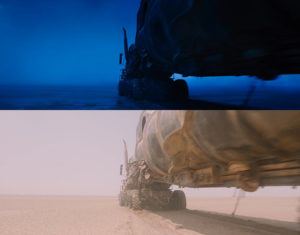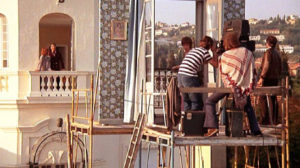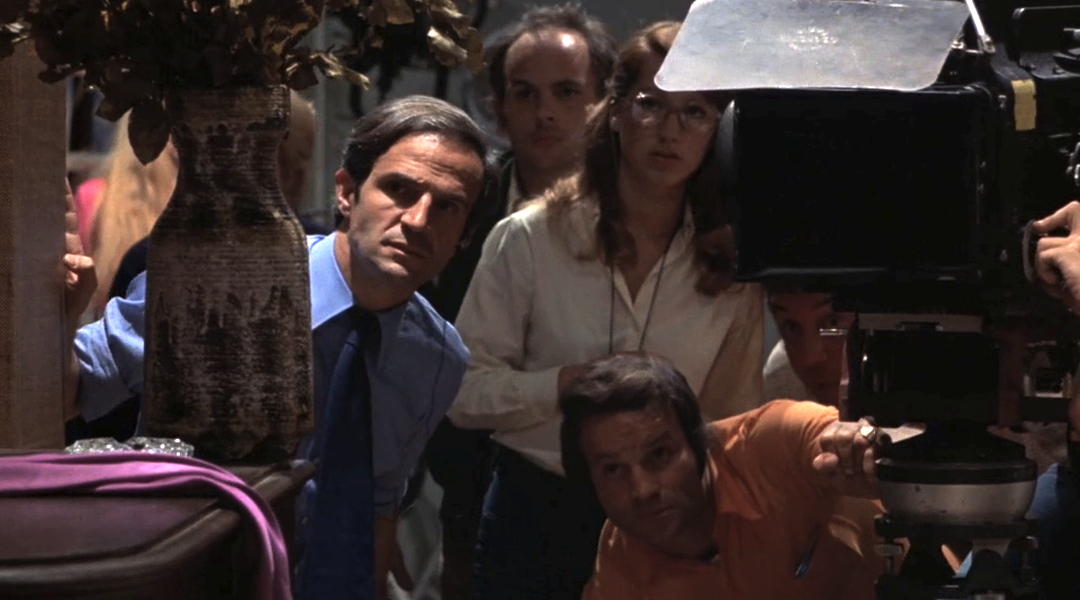When I first came to Winona State University, I hadn’t decided what I wanted to do for a major and never really felt compelled towards any specific field. First, I started with a Pre-Pharmacy major, then Pre-Law, next TESOL (Teaching English to Speakers of Other Languages), and eventually a general English major. I came to realize that, even though each major interested me, they weren’t something that I could picture myself doing for the rest of my life. Afraid that I wasn’t going to graduate in time —as I was already at the end of my sophomore year— I decided to try out one last major: Film Studies. Since then, I would have never guessed I would be so thrilled that I have found something that ignites my passion, and also introduced me to one of my new favorite film movements. That is why, as the last film I will be covering from the French New Wave, it is with a heavy heart that I introduce François Truffaut’s 1973 film, La Nuit Américane, or Day for Night in English. Despite my melancholy, the film isn’t actually sad, but rather quite enjoyable.
The title for the film La Nuit Américane (American Night) was the French name for a filming technique —known as “day for night” in English— which made scenes shot during daytime seem like nighttime through a filter on the camera lens or after being edited in post-production. Today’s cameras can easily adjust to the night sky’s underexposure, and even the cameras in our smartphones can take away most unwanted shadows. Yet, in 1972, sometimes filming was made easier by using the day for night technique, and helped save time and money. Truffaut’s film didn’t have much to do with the technique at all. In fact, the storyline was an original screenplay that came to him while he edited another one of his film’s, Two English Girls, in 1971. However, the name symbolizes something more than just the technique; while the film technique is used to mask the correct time of day, the actual film unmasks filmmaking, so the plot becomes the opposite meaning of the film’s title.

With some simple color correction, this shot from Mad Max: Fury Road (2015) has been transformed into nighttime.
There is a French phrase, “mise en abîme”, which means telling a story within a story, or a picture portrayed within a picture; thus, Truffaut’s film uses mise en abîme, and the film can sometimes get a little confusing. Day for Night fully shows what It’s like to work on a set and film a full feature-length movie from different perspectives of everybody working, such as the actors, the director, the script girl, the props man, and several other employees. As a familiar face closely associated with Truffaut, Jean-Pierre Léaud plays his traditional role as a naive, somewhat childish bloke named Alphonse. Truffaut even stars in the film as the director named Ferrand. The movie within Day for Night is titled Pamela, and the story follows a young man and woman in love. They plan on getting married, but the young woman eventually falls in love with the man’s father, and the two run away together.

The movie crew being filmed as they film Pamela.
I will only be mentioning the characters by their real name for simplicity since they have their name in Pamela and their name in Day for Night, which could bring even more confusion on top of the already convoluted plot. Of course, making movies can’t be made without some small bumps in the road, and Truffaut made sure there were plenty shown in the film. Some of them included Léaud’s character having relationship troubles with his girlfriend which led to Léaud’s co-star, played by Jacqueline Bisset, cheating on her husband with Léaud out of pity. An actress forgets to mention she is pregnant and towards the end, the father in Pamela dies while still finishing the film, but due to an unrelated car crash. The film even shows the smallest problems that can arise, like having to use the assistant director’s car because the stunt cars aren’t colored as Truffaut wanted and would be too expensive to paint the right color, or a scene where a kitten wouldn’t go towards a milk saucer to drink from it for a scene.
Besides the layered storylines and intertwining problems, there is a ubiquitous theme that suggests finishing the film is more important than personal life concerns. Even though Léaud’s character is heartbroken and wants to leave after his girlfriend runs off with a stunt double in Pamela, Bisset’s character tries to convince him to stay and finish the film. Otherwise, he would be a fool. Additionally, Nathalie Baye’s character in the movie says something along the lines of, “I would dump a boy for a film but never a film for a boy.” Despite the negative connotation of putting your work ahead of your personal needs, there is logic behind the theme because the plot shows how much effort must be put into a film. Movies can’t be made within a few weeks if they’re going to be great. Life happens which messes up schedules, plans and getting the perfect results needs every ounce of consistent attention. In general, though, Day for Night is just a fun film to watch. This film showed me some of the lesser-known, behind the scenes techniques of filmmaking. For instance, did you know that if there is snow in a film shot during the warmer months, they use a bunch of soap bubbles? At least, in Day for Night, they use a huge truck similar to a firetruck with a hose and a big pouch at the end that spurted out tons of white, foamy bubbles. Here I was, thinking that fake snow was only made from some sort of white flakes or dust.

Jean-Pierre Léaud and François Truffaut discussing angles to hold the fake gun with the “snow” in the background.
Even though this film has been considered one of Truffaut’s best films, not everybody thought so. Jean Luc-Godard —a close friend and one of the leading auteurs alongside Truffaut in the movement— had nothing nice to say about Day for Night. As I mentioned in my essay about Godard’s last French New Wave film Tout va Bien, his personalized style became much more political and militant by the end of the 1960s. On the other hand, Truffaut went on to make more aesthetic films by the late 1960s. Godard described Truffaut’s film as dishonest and wrote several slanderous and resentful letters to him about how Truffaut didn’t portray filmmaking correctly. Godard thought the film created a deceptive appearance that filmmaking was all about the aesthetic, and anybody could make a film if you had just the right touch. I think this is true in some respects, but Godard believed that films could not be made at all without big budgets and a substantial personal influence in the filmmaking community. Truffaut was furious and wrote back plenty of letters calling Godard out on all of the “incorrect” ways he made films too. Eventually, both auteurs got so heated that Godard ended up dragging Jean-Paul Léaud in some of his letters, even though Léaud had nothing to do with their quarrel and worked a great deal with both of them. Additionally, Godard mockingly asked for money to make his films if Truffaut seemed to have so much of it. The divide between the two eventually marked the end of the film movement.
Without the movement’s ring leaders, the French New Wave had no direction and faded into nonexistence. Nevertheless, lasting from the late 1950s through the late 1970s, the movement and its films embodied freedom, love, existentialism, boundless creativity, and intrepid originality depicted through characters and plots that never copied or followed in each other’s footsteps. The French New Wave was flexible and had more than enough room for all different kinds of film styles as French culture ebbed and flowed. Indeed, the imprint of the film movement had become so deeply rooted into cinematic history that the legacy of the French New Wave period still lives on today, and has been placed in the hall of fame as one of the most pivotal film movements in cinematic history.


Recent Comments